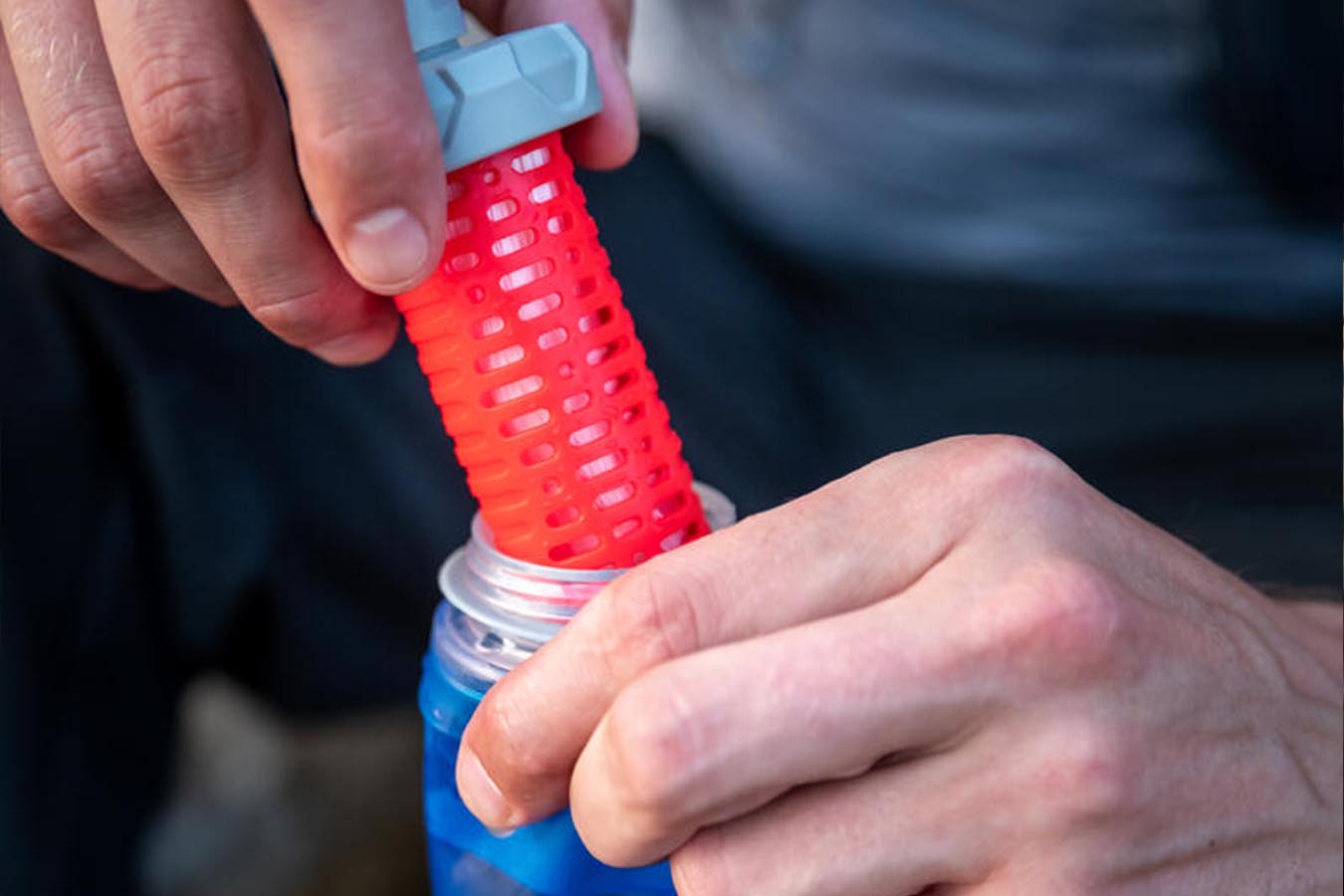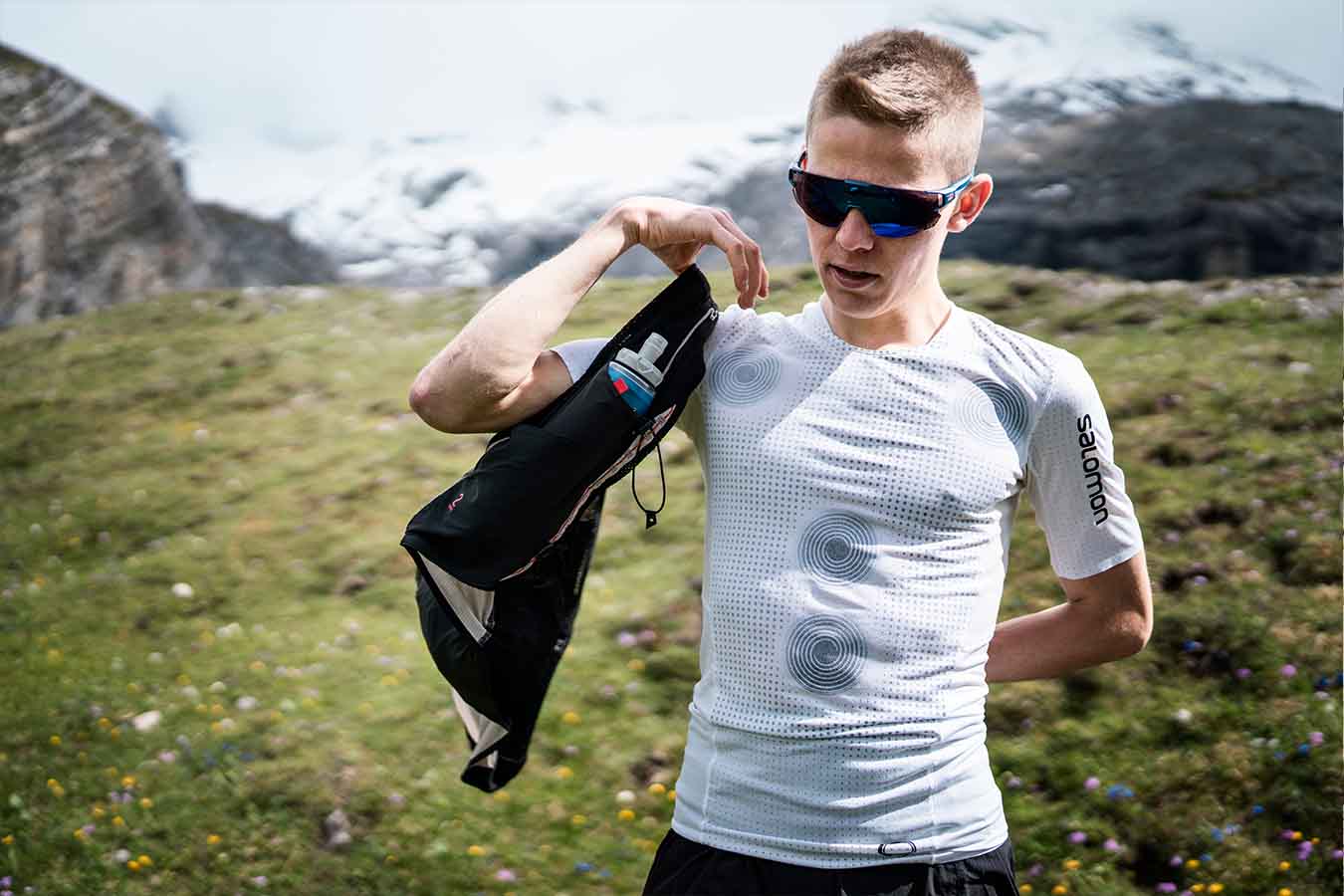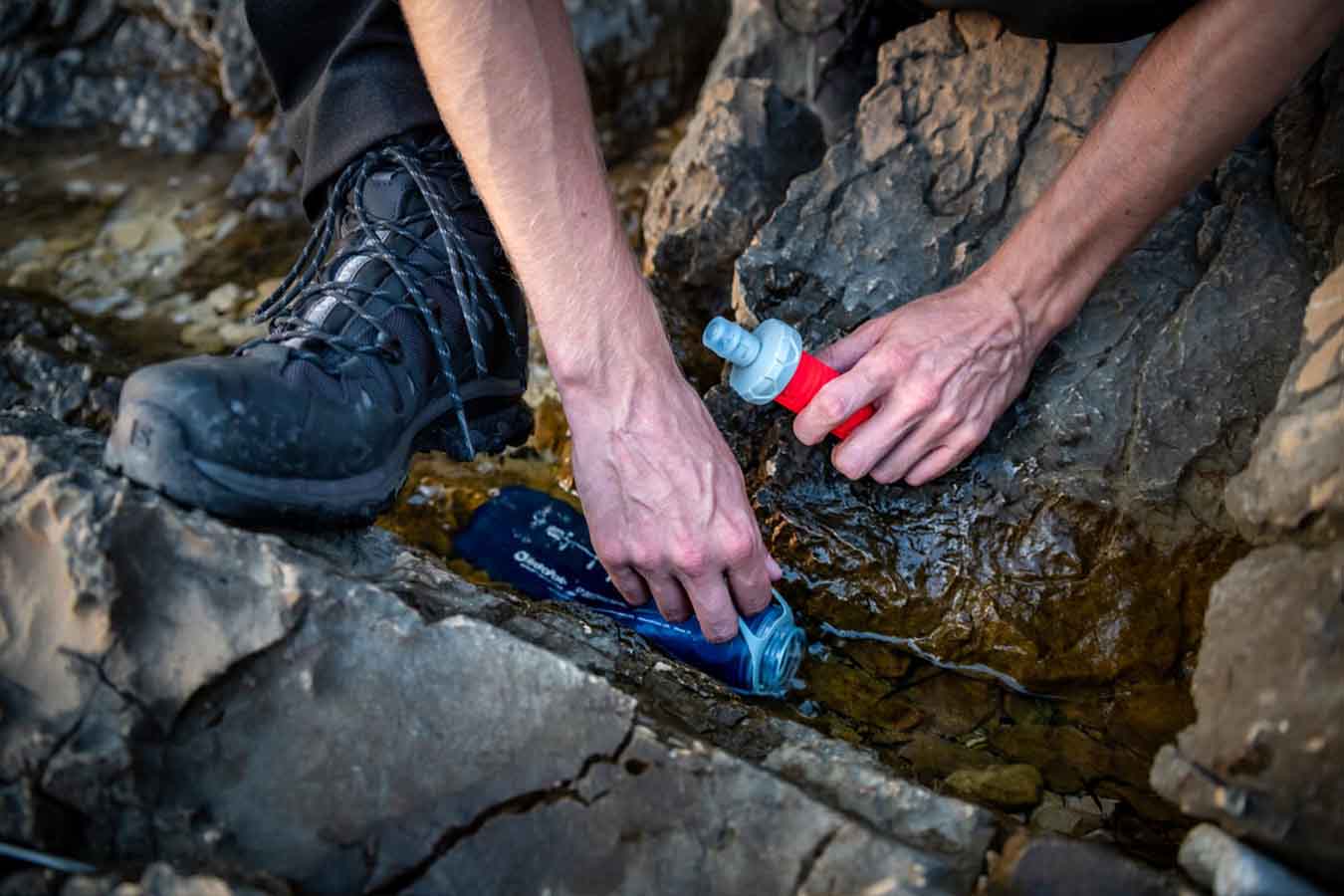Stay hydrated while running
Staying hydrated is one of the key factors to run in comfort and to perform well. Especially when the intensity gets harder and runs longer. It seems difficult to carry water when your running, but there are lots of hydration systems that can help. How to hydrate in practice? We tell you here.
The importance of hydration
Knowing that the human body exists for 70% out of water, it's no surprise that water plays an important role. Even, and especially, during running. When you work out, your body temperature rises, and that means you start to sweat. Sweating is the main reason for dehydration. So you must drink enough to compensate.
The symptoms of dehydration are:
- feeling extremely thirsty;
- your urine looks deep yellow;
- headache and concentration problems;
- digestive problems;
- (long) activities feel harder;
- performance degradation.
Is it possible to overhydrate?
Yes, it is possible to overhydrate. When it's cold, or when you train on a quite low intensity, you don't sweat the same as on hot summer days. When you drink too much, the sodium levels are unbalanced. That can lead to headache or feeling desoriented.
When should I drink during running?
Drink before your run
When you go for a long run, or heavy interval training, it's important to hydrate before your run. Consider about 5 to 7 ml/kg body weight, and that 4 hours beforehand. That's just a general guideline. Listen to your body and, if necessary, you can drink more of course.
Hydration during running
The longer you run and the warmer the weather, the more import hydration.
The general rule is to drink 100 to 200 ml every 20 minutes. But don't pin this too strictly, because it's not that simple. The temperature, your speed, weight and personal characteristics. Do you want to know exactly what your water intake should be? Contact a sport- or nutrition expert.
In extreme warm weather conditions, you can add electrolytes - such as natrium (salt) - to your water. Add 500 to 700 mg per liter, or choose a Oral Rehydration Solution (ORS), a drink that contains the necessary electrolytes.
A golden tip: don't listen to your feeling. Thirst often is a sign that your body is already dehydrated.
Examples of electrolytes are SIS Go Hydro or Born tablet Watts & Minerals.
"When you feel thirsty, it's mostly a sign that your body is already dehydrated"
Drinking after a run
After your run, you have to refill what you sweated. In theory, you should drink 1,5 liter for every (kilo)gram you lost while running. You can, of course, spread that amount over the day.
Do you have a training planned for the day after? Than it is extra important to rehydrate.
How to carry water during running?
Easier said than done, drinking during running. Or maybe it is? Runners' lab has a collection of accessories to make hydrating during running easy.
Hydration vests are one of the most common ways to carry your drinks. Especially during long trips, for runners and walkers. Besides the space in the back, there is probably room for soft flasks in front, too.
Soft flasks are more compact. These flexible bottles are easily put away in a pocket or belt.
Drink belts are bands to wear on your hips. Most of them are foreseen with a bladder to fill with water.
The trend of cupless events
More and more events go for the cupless principle: no more cups at the supply post. There is sports drink or water, but you have to drink it out of your own hydration system, like a soft cup, soft flask or running pack.
It's advisable to prepare for this. Try to run with a hydration pack first, wear a short with pockets to carry a soft flask or cup, or use a running belt to take a cup or flask with you.
Experience expert and Runners' lab advisor Senne speaking
Senne, experienced long distance runner, trail runner and advisor at Runners' lab has already completed runs of 100 kilometers and more. He knows best how to drink on the go, and how to carry enough water. He tells you how he handles these long distance runs.
Handhelds for the shorter runs
"Personally, I think hydration is useful for runs longer than 1 hour. For activity under 90 minutes, I prefer handhelds. They are easy to use and lightweight. You can hold them in your hands, but also store them in the pocket of your pants or jacket if possible."
Hydration backpacks for the longer trips
"For the longer runs, I opt for the hydration packs. They offer enough storage place for all your essentials, your nutrition and drinks. The hydration pack I use, has 2 pockets in front, where I put my soft flasks. I use these flasks instead of the bladder in the back, but of course that's a personal matter. A bladder in the back of the pack surely has its benefits, too. Or you can combine both."
"An important point here is the size of your hydration pack. You better try it first. When it doesn't fit well, chances are you will suffer from friction or irritation. The right size is a must. Another advice I can give: adapt your running clothes to it. Keep in mind that the backpack serves as an extra layer, which creates extra warmth."
Accessories during races
"For my races, I use slightly different gear as on training days. I don't want to miss something on important moments. My go-to item is the Salomon Advanced Skin 5 Set, the ultimate multi-functional running pack for ultraruns and long distance runs."
"Furthermore, I mostly have soft cups with me during races. They are fully foldable - as compact as a tissue - and thus easy to store. And when running in the mountains or full nature, I take my soft flask with XA Filter with me. With these items, I complete my long distances with success."
"When you use soft flasks, don't forget to clean them. Wash them uit and let them dry. Optionally, you can put them in the freezer to definitely kill all bacteria."




